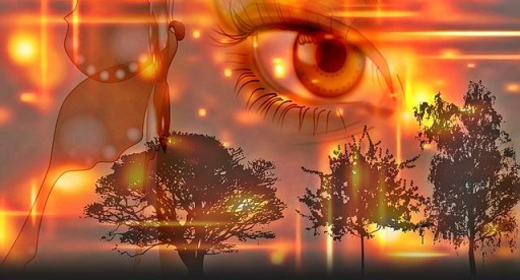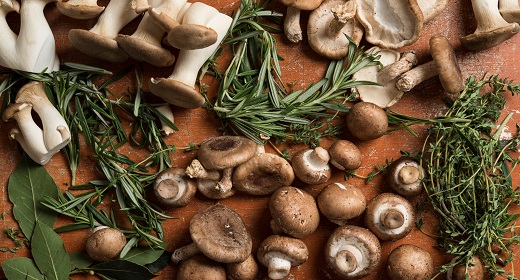by Ocean Robbins: Mushrooms have been eaten and used medicinally for thousands of years, all around the world…
Ancient Egyptians considered mushrooms to be plants of immortality and recognized them as a gift from the god Osiris. They valued mushrooms so highly, only the royals were allowed to consume them; commoners were forbidden to touch, much less eat them.
Based on the details of ancient rock paintings, some historians think that the use of magic mushrooms was alive and well in 9,000 BC among indigenous populations of North Africa. (I don’t know where those cave artists found tie-dye paint, but you can’t argue with science!) Furthermore, statues and art thought to represent mushrooms have been found in Mayan and Aztec ruins in Central America, establishing their ceremonial importance in the Americas over many thousands of years.
Today, mushrooms are growing in popularity worldwide due to their nutritional properties and versatile uses in the kitchen. While annual consumption of mushrooms in the United States stabilized at an average of three pounds per person in the decade ending in 2015, the market has been growing steadily since and is projected to grow even faster globally over the next several years.
But what makes mushrooms so special? Are they good for the environment too? And what about poisonous and psychedelic mushrooms? How do you avoid the former and not take the latter by accident? And will I be able to stop myself from making at least one “fun guy” joke for the rest of this article?
What Are Mushrooms?
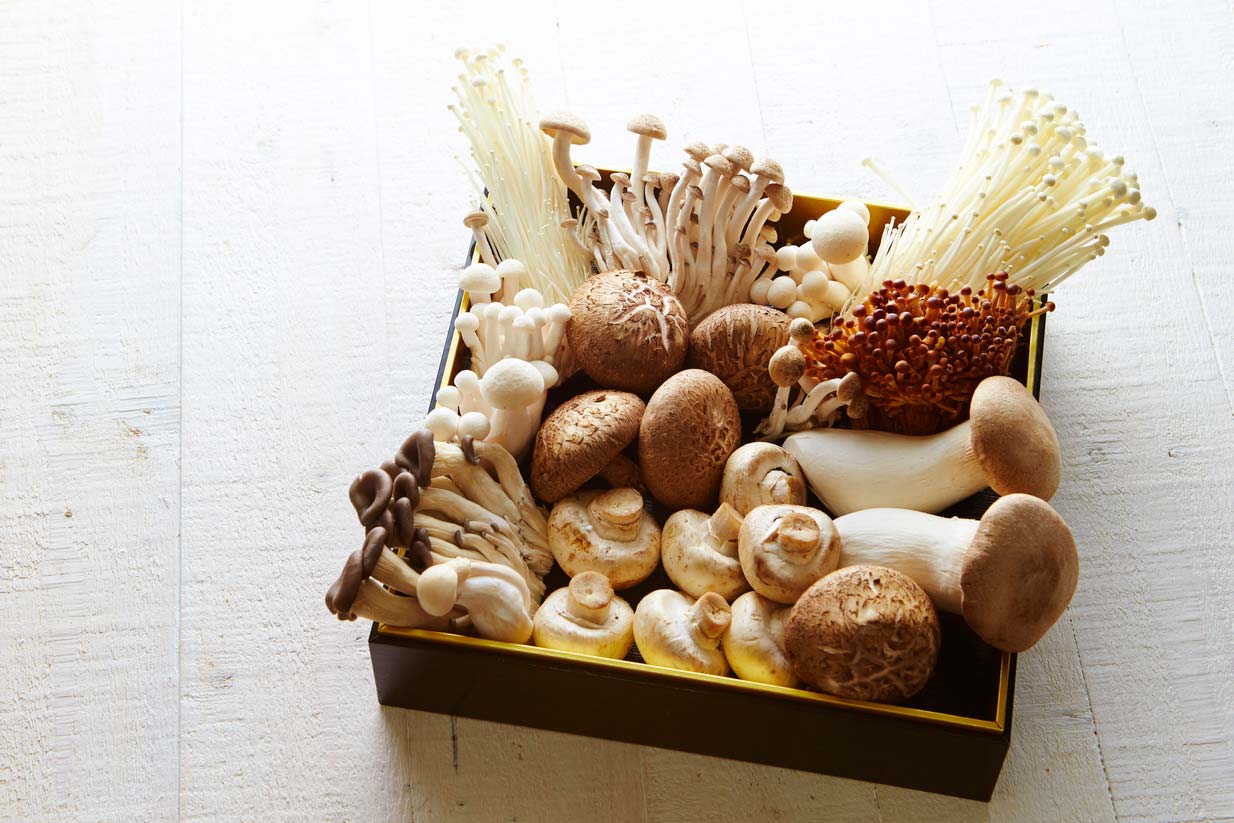
Mushrooms are mainly found in forests and areas with a lot of moisture. They are classified as a saprophage (a fancy word of Greek origin, meaning “eats rotting stuff”), and therefore don’t have chlorophyll, so they don’t require sunlight to grow. Saprophages tend to grow in peat, on logs or trees, and in soil, and thrive in moist environments by extracting nutrients from dead and decaying plant and animal matter.
Although mushrooms are often lumped together with vegetables and other plants, technically, they aren’t plants at all. Mushrooms are fungi — as are yeasts and molds. Fungi get their own kingdom, just like plants and animals.
There are two big differences between the two kingdoms. Plants make their own food via photosynthesis, while fungi take in their food from the outside, just as animals do. Also, plant cell walls are made up of cellulose, as opposed to the chitin that makes up the cell walls of fungi (and interestingly, the exoskeletons of insects and the scales of fish). So next time you include mushrooms in a veggie stir-fry, take time to appreciate the fact that members of such different biological kingdoms get along so well together.
What we call a mushroom is technically the fruiting body of a type of fungus. It’s made up of three parts: the stipe (stem), the pileus (cap), and the lamellae (gills). The “seeds” of the mushroom “fruit” are its spores, which form a network of microscopic rooting threads called mycelium. This is a mass of thread-like branches that the mushrooms use to decompose nearby plant material in order to extract nutrients. Mycelium can live for many years, communicating with other plants and sending up its annual crop of mushrooms.
The mycelium can be small and compact, or can span underground over thousands of acres with mushrooms popping up out of the ground sporadically or in clusters. The world’s largest organism is thought to be a mycelium network belonging to a mushroom technically called Armillaria ostoyae, or commonly known as the honey mushroom, found in Malheur National Forest, Oregon. How enormous is it? This mushroom’s mycelium network covers two square miles and is around 8,650 years old. So if you ever get tired of knock-knock jokes, you can try this riddle: “What’s two and a half miles across, 8,650 years old, and lives in Oregon?”
Types of Edible Mushrooms
There are approximately 14,000 different species of mushroom, which includes edible, inedible, poisonous, and psychoactive. Out of the 300 edible species, 30 have been domesticated, and 10 are commonly grown commercially for consumers. The most common edible mushrooms are:
- White (includes white button, portobello, and cremini)
- Oyster
- Shitake
- Enoki
- Lion’s Mane
- Turkey Tail
- Hen of the Woods
- Beech
- Chanterelle
- Porcini
- Morel
You have likely seen many of these either at the grocery store or perhaps used in dishes on a restaurant menu.
Mushroom Nutrition
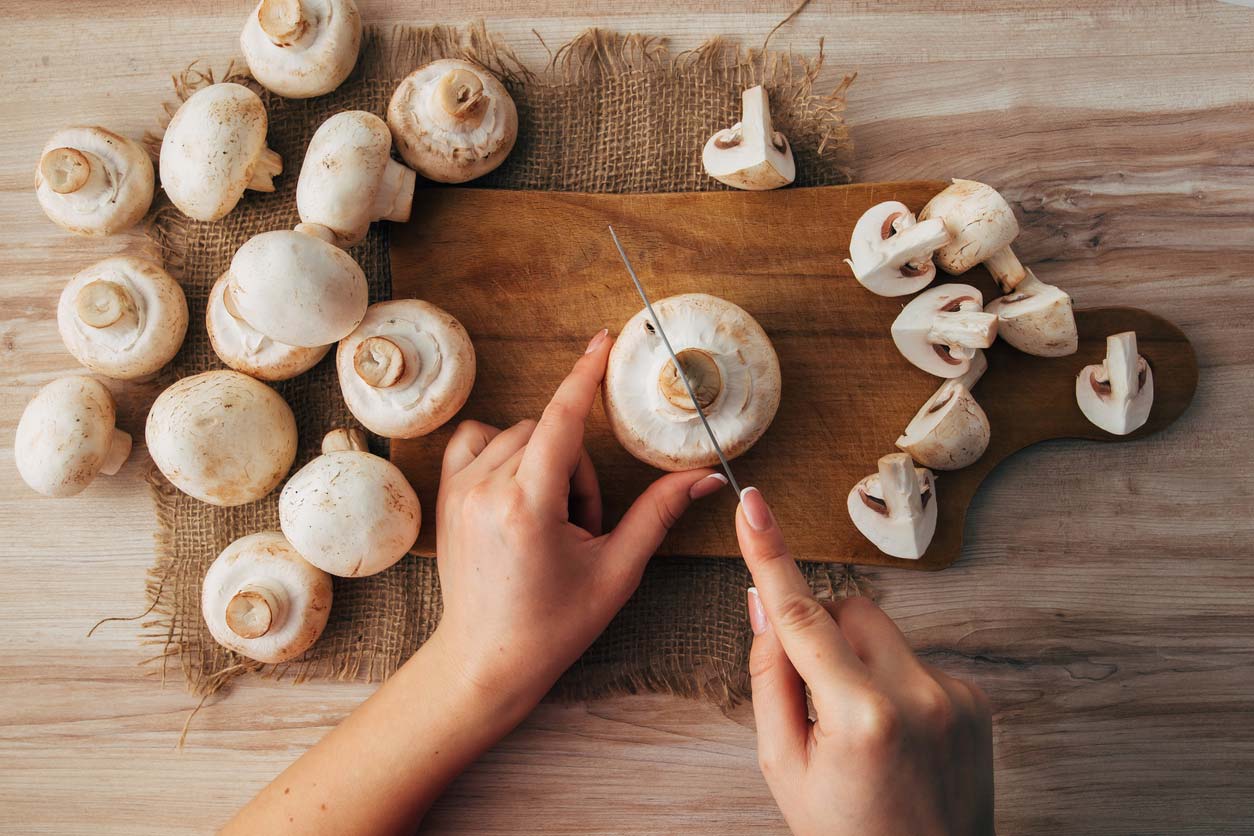
In case you’re under the impression that ordinary white mushrooms are like white rice and white flour — devoid of nutrients — let me reassure you. The common button mushroom is actually one of the most nutritious varieties out there. In fact, no matter what type of edible species you choose, mushrooms are tremendously nutritious, adding a wide range of antioxidants, vitamins, and minerals to your diet.
One cup (108 grams) of sliced white mushrooms offers the following nutritional profile:
- Calories: 28
- Protein: 4 grams
- Total Carbohydrates: 4.4 grams
- Dietary Fiber: 2 grams
- Total Sugar: 0 grams
- Total Fat: 0.4 grams
- Riboflavin: 29% of the Daily Value (DV)
- Niacin: 22% of the DV
- Pantothenic Acid: 16% of the DV
- Folate: 5% of the DV
- Thiamin: 7% of the DV
- Selenium: 21% of the DV
- Copper: 16% of the DV
- Potassium: 12% of the DV
- Phosphorus: 11% of the DV
- Zinc: 4% of the DV
- Manganese: 3% of the DV
- Magnesium: 3% of the DV
- Iron: 2% of the DV
Interestingly, mushrooms share a nutrition-related benefit with humans. That single cup serving also contains approximately 23 IU of vitamin D. We humans aren’t the only clever organism that produces vitamin D in our skin when exposed to direct sunlight; mushrooms can do the same. This makes mushrooms the only naturally occurring non-animal source of the vitamin. (Admittedly, however, 23 IU of Vitamin D is only about 6% of your daily value, so although the vitamin D in mushrooms is a fun fact, you’re probably better off getting sunshine or considering supplementation, unless eating 4 pounds of mushrooms per day is your idea of a good time.)
Mushrooms are also a rich source of antioxidants that counteract the damaging effects of free radicals. And certain types of mushrooms have been studied for their medicinal benefits, including boosting your immune defense, supporting brain health, regulating blood sugar levels, and improving exercise performance.
Now, let’s take a deeper dive into their array of benefits.
7 Health Benefits of Mushrooms

Mushrooms are a rich source of compounds and complex substances with antimicrobial, antiviral, antitumor, antiallergic, immunomodulating, anti-inflammatory, antiatherogenic (against the formation of fatty deposits in the arteries), hypoglycemic, and hepatoprotective (good for the liver) properties. (And they must be good for the brain, too, to inspire me to use all those fancy science words in that last sentence!) Some of the best-researched health benefits of incorporating mushrooms into your diet are detailed below.
1. They are good for your immune system.
In a 2011 study led by researchers at the University of Florida, participants who ate a four-ounce serving of shiitake mushrooms each day for four weeks had better-functioning gamma delta T-cells and reductions in inflammatory proteins. The researchers concluded that regular mushroom consumption could enhance the immune system while reducing excessive inflammation.
Vegans and vegetarians were excluded from the study, as were people who already were eating at least seven daily servings of fruits and vegetables, under the assumption that they probably already had powerful immune systems. So the study didn’t tell us how much marginal improvement you might expect if you add shiitakes to an already plant-based diet. We do know that mushrooms are also a rich source of compounds called beta-glucans, which activate leukocytes — or white blood cells — to help fight off foreign substances and diseases.
2. They may have anti-aging properties.
Mushrooms are high in antioxidants, compounds that fight the free radicals and oxidative stress that are responsible for damage to cells from diseases like cancer, coronary heart disease, Alzheimer’s, and dementia. A study conducted by Penn State University in 2017 found that mushrooms are especially high in two antioxidants, ergothioneine and glutathione. And some species contain more than others. While the research is preliminary, Porcini mushrooms appear to be the best source of these two antioxidants. And another piece of good news is that levels of ergothioneine and glutathione are unaffected by cooking.
For you history and etymology buffs out there, ergothioneine got its name from the fungus from which it was first purified in 1909: ergot. This toxic fungus may have been partially responsible for a lot of the crazy that was perpetrated at the Salem witch trials in the late 17th century. Scholars have suggested that the moldy ergot grew on rye that was planted just before a cold winter and harvested after a wet spring. And those who ate the bread made from the grain likely suffered convulsions and hallucinations. Once the grain ran out, the trials quickly ceased. But don’t worry — the ergothioneine in edible mushrooms won’t make you see witches.
3. They may have anticancer properties.
Researchers from the University of Western Australia in Perth conducted a study of 2,000 Chinese women, roughly half of whom had suffered from breast cancer. The scientists reviewed the women’s eating habits and factored out other variables that contribute to cancer, such as being overweight, lack of exercise, and smoking. They found that those women who consumed at least a third of an ounce of fresh mushrooms every day (about one mushroom per day) were 64% less likely to develop breast cancer. In the study, dried mushrooms had a slightly less protective effect, reducing the risk by around half.
Other research has found that white button mushroom powder was able to significantly lower prostate-specific antigen, or PSA, levels in men previously treated for prostate cancer. This may indicate a potential preventive application to reduce the risk of prostate cancer recurrence.
4. They may protect brain health and cognition.
In a 2016 animal study published in the International Journal of Molecular Science, researchers examined the effects on the brain of H. erinaceus, or Lion’s Mane, a species of edible and medicinal mushroom. Researchers found that when some very unfortunate mice with chemically-induced Alzheimer’s disease were given Lion’s Mane extract, they experienced reduced free radicals, blocked calcium overload, improved endurance, and reduced escape time in an ethically disturbing water maze test.
Lion’s Mane was also the focus of a 2017 animal study, in which researchers found that supplementation given to healthy mice boosted neuronal function and improved recognition memory. And in a 2018 study published in Behavioural Neurology, researchers found that Lion’s Mane promotes positive brain health by inducing nerve growth factor, which may help improve outcomes of ischemic stroke (the one caused by a blockage preventing blood from reaching the brain), Parkinson’s, Alzheimer’s, and depression if included in daily meals.
5. They are good for your heart.
Mushrooms are rich in the amino acid ergothioneine, which has been associated with a lower risk for heart disease. In a 2019 study published in BMJ, researchers looked at the blood chemistry of 3,236 participants over 21 years, and found that higher levels of ergothioneine were associated with lower risk for heart disease diagnosis and mortality. Furthermore, the researchers found that higher levels of ergothioneine can likely be supported by eating a diet rich in this amino acid, of which mushrooms are a significant source. Other research has shown the reishi or lingzhi (G. lucidum) species of mushroom to offer specific cardioprotective effects because of its antioxidant activity.
6. They are good for your gut and digestive system.
Research shows that mushrooms act as a prebiotic — providing food for probiotics — and can help to stimulate the healthy balance and growth of your gut microbiota. They improve and regulate the microbiome, which is critically important to overall health. Studies have found that gut microbiota has a significant role in regulating diseases like non-alcoholic fatty liver disease, pneumococcal pneumonia, gut conditions, cardiovascular disease, type 2 diabetes, and possibly even neurodegenerative diseases.
7. They may stimulate hair growth.
Some varieties of mushrooms have even been found to promote healthy growth of hair follicles. For instance, chagas are commonly used as shampoo in Mongolia to maintain healthy hair. Seeking to determine whether there was any science to back up this traditional Mongolian practice, researchers conducted a 2019 study that was published in the Journal of Natural Medicines. The researchers found that chagas were indeed a potential candidate for hair health applications and had a stimulative effect on hair follicle cells in a petri dish, doing more for the cells than an FDA-approved hair-growth drug, minoxidil. Whether or not eating mushrooms will beat Rogaine in giving you a shaggy mane, however, is still unknown.
Practical and Environmental Benefits of Mushrooms
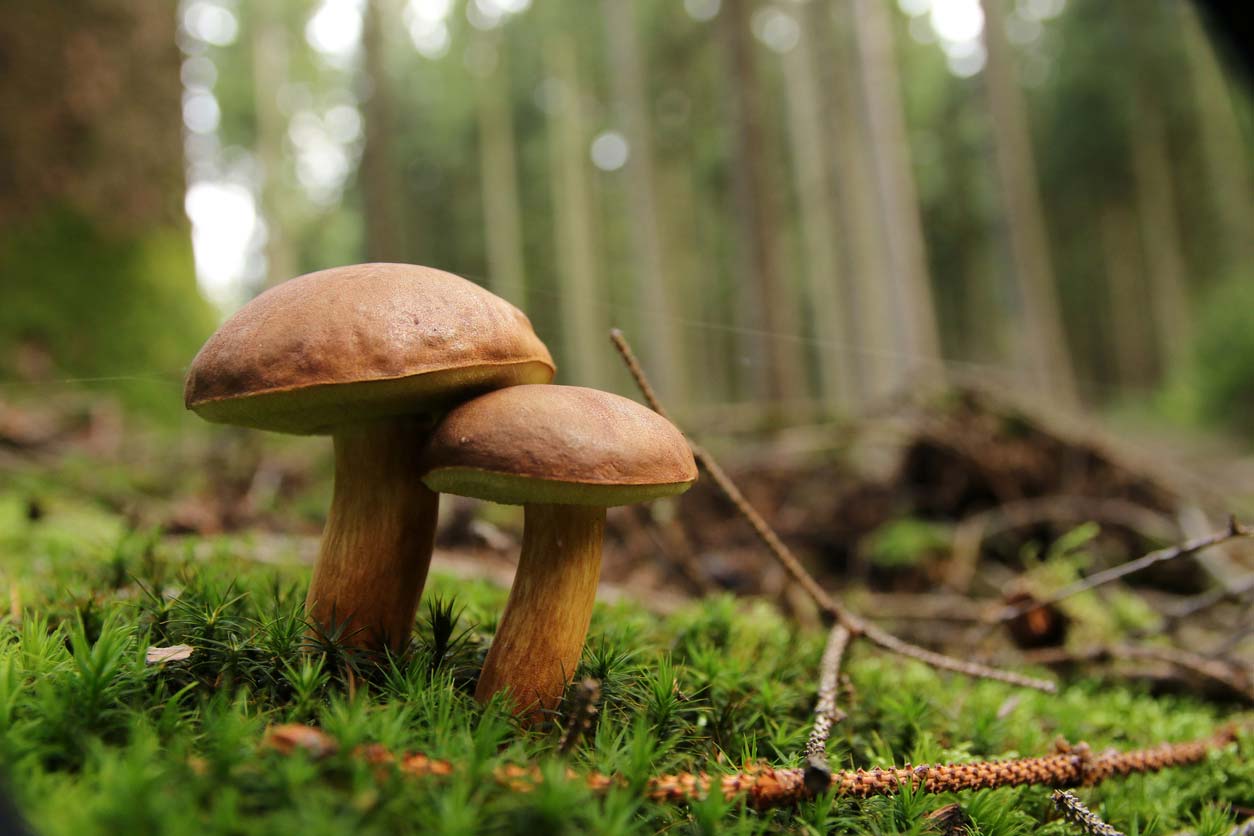
Not only are mushrooms great for your health, it turns out that they’re also really good for the environment. As nature’s master recyclers, fungi are adept at turning rotting vegetation into new growth. And they’ve got a lot of other neat tricks up their stems!
Mushrooms have a symbiotic, or mutualistic, relationship with other plants.
Fungi that work synergistically with plants are called mycorrhizae. Here’s how it works: fungi colonize the roots of a host plant, helping them access and absorb more nutrients and water. In return, the plant provides the fungi with carbohydrates made through photosynthesis. Both also benefit from increased protection from pathogens.
Mushrooms are critical to decomposition.
Mushrooms are nature’s recyclers. They allow nutrients to be added back to soil and water so that other plants can use them to grow and reproduce.
Mushrooms are sustainably grown.
Many varieties of mushrooms are still wild-harvested and sold to small restaurants and farmers markets.
They may also help fight deforestation. As seen in Tanzania, a program called Farm Africa is teaching farmers to grow and sell oyster mushrooms instead of growing crops and raising animals that require cutting down forests.
There are also commercially grown mushrooms and mushroom farms. Many commercial mushroom farms sell mushroom compost, which can be reused by farmers and gardeners growing less demanding crops. This compost can also be used as a mulch around perennials, trees, and shrubs.
Furthermore, mushrooms produce an abundance of food for relatively little input of water and energy compared to many other crops.
Mushrooms could help clean up oil spills and toxic chemicals.
Mushrooms are highly absorbable, intricate, and seemingly intelligent (that is, responding actively and appropriately to their environment, even when encountering new situations). And some mushroom researchers like Paul Stamets believe that they could be used to help solve a number of human problems. While more research is needed, some of these ideas include using mushrooms to break down petrochemicals or absorb radiation from contaminated soil and water, or to cleanse industrial runoff and filter toxins and endocrine disruptors.
The prestigious science journal Nature reported in 2007 that some fungi appeared to be eating the radiation still emanating from the Chernobyl nuclear plant some 20+ years after the disastrous 1985 accident.
Is it safe to eat mushrooms that have absorbed oil, lead, radiation, or other contaminants? Probably not. Their ability to bioaccumulate toxins can be a great way to clean up soil, but they still need to be disposed of properly. The good news is that most mushrooms grown for human consumption aren’t growing on contaminated soil. (Although I can imagine a Marvel superhero who gained his power to make people feel good after eating radioactive mushrooms. Of course, his name would be “Fun Guy.”) And, in fact, mushrooms are on the Environmental Working Group’s Clean 15 list because they aren’t generally contaminated with significant amounts of pesticides.
Potential Mushroom Health Risks
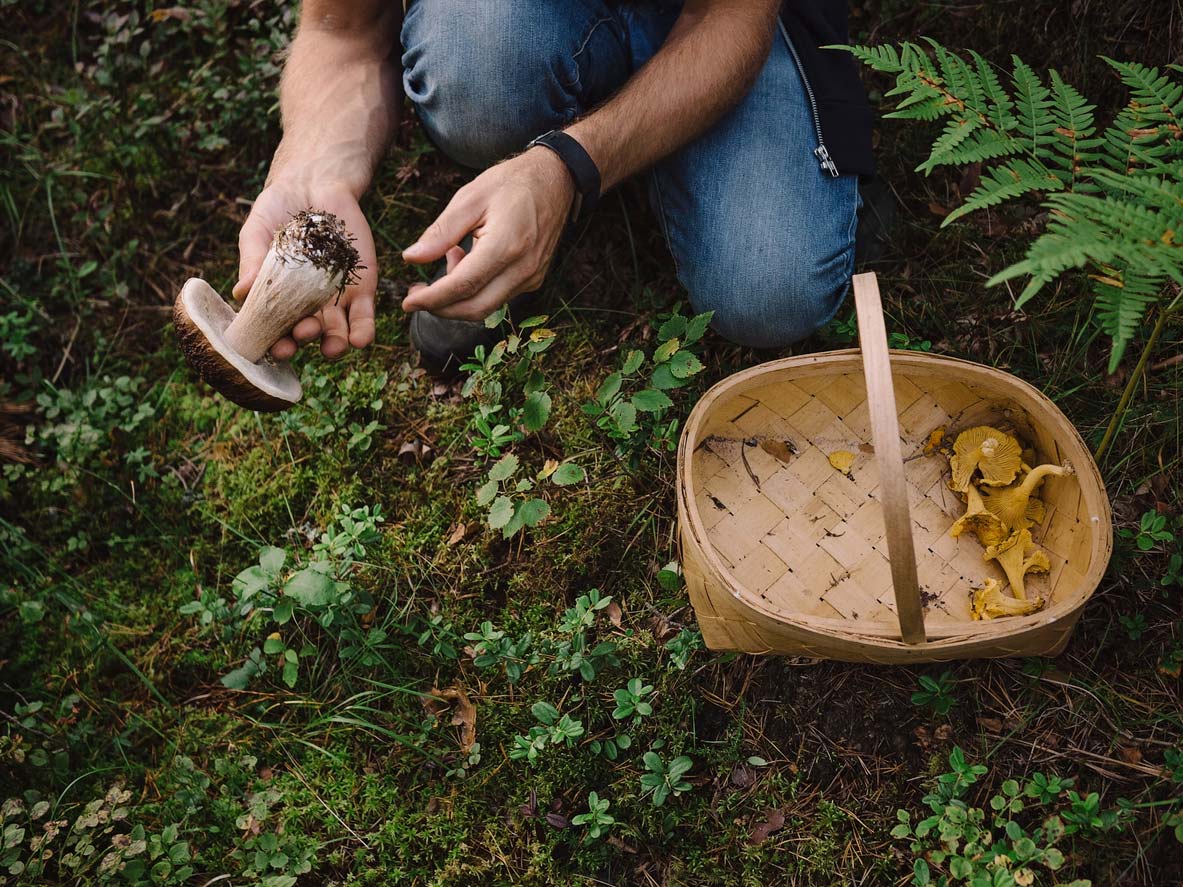
While there are thousands of species of mushrooms, many of which have known health benefits, there are a few important things to keep in mind if you’re considering adding mushrooms to your diet.
Not all mushrooms are edible.
In fact, many wild types are poisonous. So before you go foraging for mushrooms in the wild, make sure you know which types are safe to eat. Poisonous mushrooms can cause a wide array of symptoms, ranging from mild gastric upset to death. One of the most treasured and delicious wild mushroom varieties, chanterelle, has a similar orange hue to the toxic Jack-O-Lantern (Omphalotus olearius), although only the Jack-O-Lantern glows at night. So unless you’re a mushroom identification expert, it’s best to stick to the ones you can find at the grocery store or farmers market.
Psilocybin
Psychedelic mushrooms contain a naturally-occurring compound called psilocybin that gives them their “magical” effects, which can be described as inducing an altered state of consciousness. Even in small doses, magic mushrooms can alter your sense perception and have hallucinogenic effects. Psilocybin binds to a serotonin receptor in your brain called 5-HT2C, which is responsible for releasing neurotransmitters related to imagination, memory, perception, cognition, anxiety, and appetite. It also appears to downregulate the brain system known as the Default Mode Network (DMN), which is basically a program that runs whenever you’re not focusing on something else, and which continually tells you who you are and what’s important to you. When the DMN quiets down, you can perceive the world differently, less focused on “What’s in it for me?” Many people have reported that this produces heightened feelings of connection and wonder.
Psilocybin is a controlled substance and is illegal in most of the United States, although clinicians and researchers are increasingly using it therapeutically to treat anxiety and depression. A 2020 study published in the Journal of the American Medical Association (JAMA) found that psilocybin reduced depression with the very first dose, and the improvements actually increased over the eight weeks of the study.
Matthew Johnson, PhD, an associate professor of psychiatry and behavioral studies at Johns Hopkins University in Maryland, has been studying psilocybin’s effects for years. He advises people not to start self-medicating with psilocybin-containing mushrooms. But he also says the drug has potential benefits for a variety of people.
For example, Johnson has conducted a study using psilocybin to help people quit smoking. The study was small, only 15 participants, but the success rate was large. Nearly 80% of the participants were no longer smoking six months after the study ended. Two and a half years later, 60% were still not smoking.
Legalization
In 2019, Denver became the first city in the US to effectively decriminalize “magic mushrooms.” This change came about because more and more researchers are finding evidence that the active ingredient in magic mushrooms, psilocybin, may have health benefits.
As of this writing, Oregon also recently passed Measure 109, which legalizes psilocybin mushrooms for therapeutic use. Psychedelic mushrooms have been decriminalized in Denver, CO, Oakland, CA, Santa Cruz, CA, Ann Arbor, MI, and Washington, DC, as the movement to decriminalize this potentially valuable compound gains traction.
They come with a small risk of foodborne illness.
Commercially produced mushrooms have been linked to a few documented cases of foodborne illness outbreaks associated with pathogens.
A multistate outbreak of Staphylococcal food poisoning in 1989 that was associated with canned mushrooms imported from the People’s Republic of China sickened 102 people. In 2003, mushrooms contaminated with Salmonella Heidelberg due to improper handling — in which they likely came in contact with raw meat — was responsible for a restaurant outbreak. And in early 2020, an outbreak of Listeria monocytogenes crossed multiple state lines and affected 36 people. It was linked to Enoki mushrooms, which are often used in East Asian dishes.
So while mushrooms can be associated with outbreaks of foodborne illness, this is actually quite rare.
Raw mushrooms may contain toxins.
Certain raw edible mushrooms — including popular varieties like the white button mushroom — appear to have a naturally-occurring compound called agaratine, which may have toxicological or even potentially carcinogenic effects. Agaratine is destroyed by heat, so it’s always a good idea to cook mushrooms, and refrain from eating them raw, to be on the safe side.
Some people may have a mushroom allergy.
Although rare, mushroom allergies are possible, especially among people who have a mold allergy. If you eat mushrooms and experience digestive upset, this could be a potential sign of a mushroom allergy. If you think you might have a mushroom allergy, or that you may be at risk for having one, you may want to speak to your healthcare provider and consider getting screened.
How to Grow, Find, and Use Mushrooms

If you’re interested in growing mushrooms yourself, you might consider a mushroom growing kit. These are designed to make it easy and convenient for you to grow mushrooms at home, even indoors. All you need is a window with indirect light and a misting bottle to spray them.
Otherwise, you can get mushrooms from most places you get other produce, like grocery stores, farmers markets, or Asian markets. They can be found fresh, frozen, dried, and sometimes canned, although the latter sometimes contains preservatives you may want to avoid. When choosing fresh mushrooms to take home, look out for bad smells, a mushy texture, and too much moisture, which can cause spoilage. In the fridge, they store best in paper (not plastic) bags, as they need to “breathe” a bit.
Once you get your mushrooms home, it’s time to experiment with all the ways to use them and figure out which ones you like the best. You can add sliced mushrooms to stir-fries, use them to replace meat in tacos and veggie burgers due to their meaty texture and earthy flavor, and add chopped or sliced mushrooms to pasta dishes and casseroles. You can even grill larger varieties, like portabellas, in place of burger patties, loading them with all your favorite toppings. Remove the stems from smaller mushrooms, stuff them with savory ingredients, and bake them. You may also enjoy simply sauteing sliced mushrooms and using them as a side dish with other veggies.
Or if you want a potent mushroom beverage mix that you can simply add to hot water to get a delicious daily dose of goodness, check out this adaptogenic blend from Four Sigmatic.
Mushroom Recipes
Whether you’re using mushrooms as a flavorful topper to a meal, a featured ingredient in chili, or as a juicy, rich “steak” on its own, they’re sure to please your palate while optimizing your health. Below we feature three types of mushrooms. If you’re new to mushrooms, you can start with just one. Or, if you’re feeling adventurous, try all three! You’ll experience the magical flavors, unique textures, and health benefits that mushrooms have to offer.
1. Mushroom “Bacon” Topper
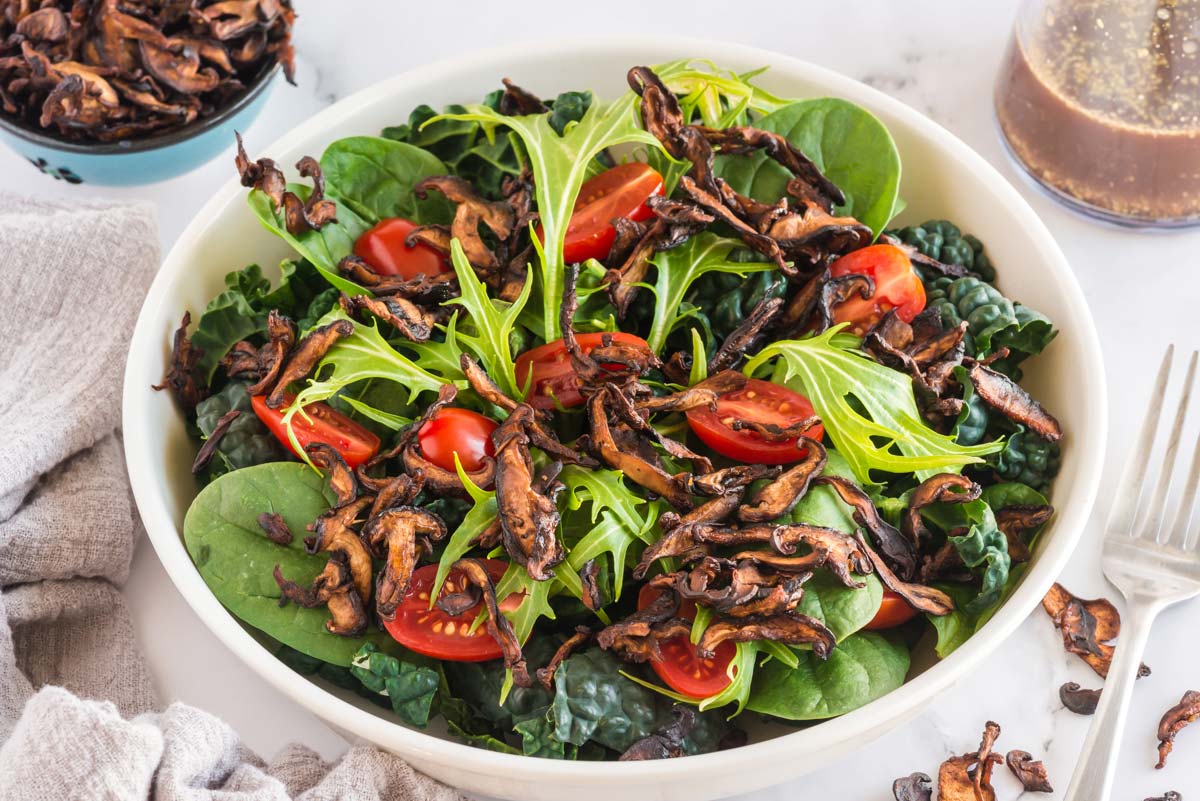
Shiitake mushrooms are prized for their rich, savory taste and their ability to hold their own in place of meat. Their ability to replace bacon is no exception. Baked in a smoky marinade, shiitake mushrooms have all the flavor, but none of the environmental or health consequences found in traditional rashers. Sprinkle this tasty and nutritious topper on salads, grain bowls, tofu scrambles, and casserole dishes.
2. Mushroom Chili
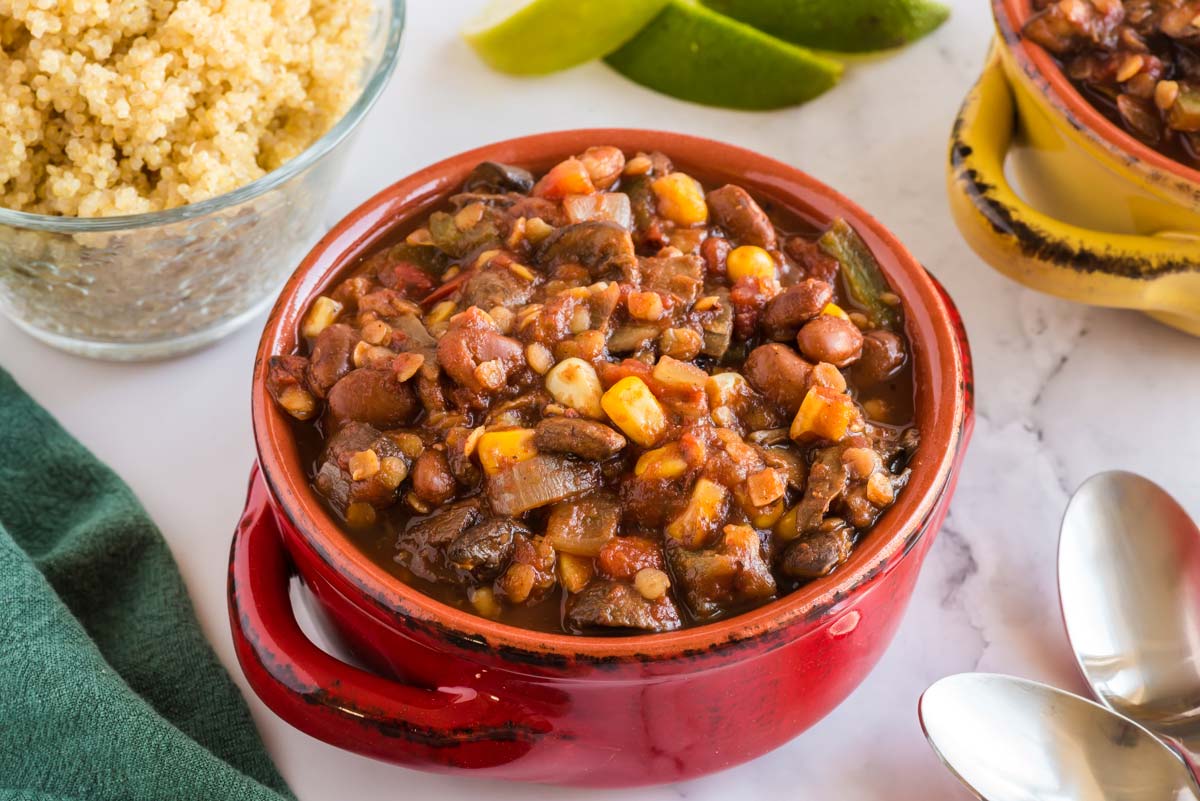
Cremini mushrooms are so very versatile. Use them in veggie burgers, stir-fries, or in this mushroom chili, which is sure to please a crowd! And despite the deceptively long list of ingredients, this hearty and healthy dish is quite simple and very much worth the (little bit of) effort!
3. Portobello Mushroom Strips with Juicy Pineapple and Onions
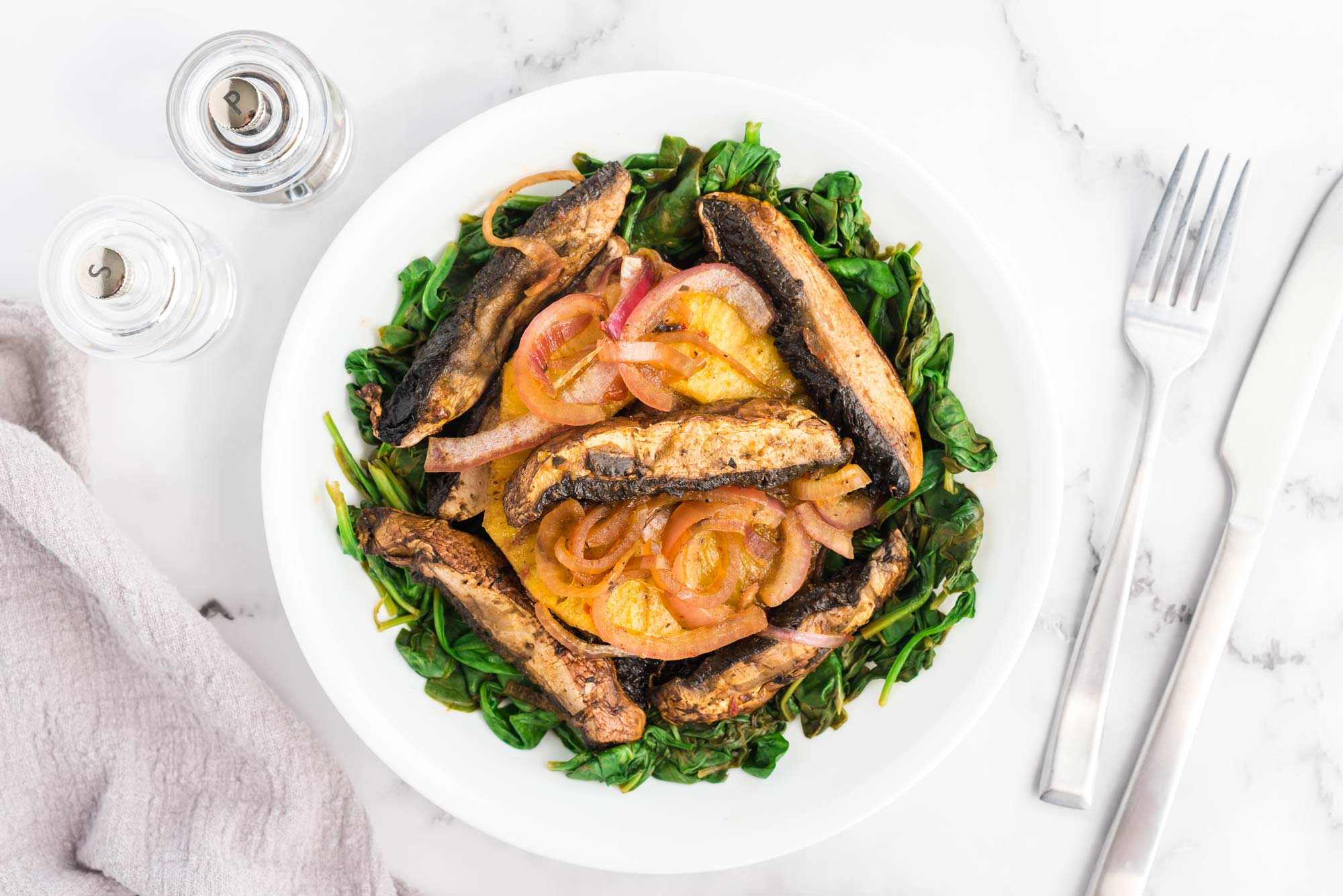
Portobello mushrooms are often substituted for traditional steak, and for good reason. They have a deep, umami flavor and a rich, satisfying texture. Pair portobellos with pineapple and onions and get ready for a burst of flavor. Bonus: Portobello mushrooms are a good source of selenium, potassium, and copper — key minerals for optimal health.
Hooray for Amazing Mushrooms!
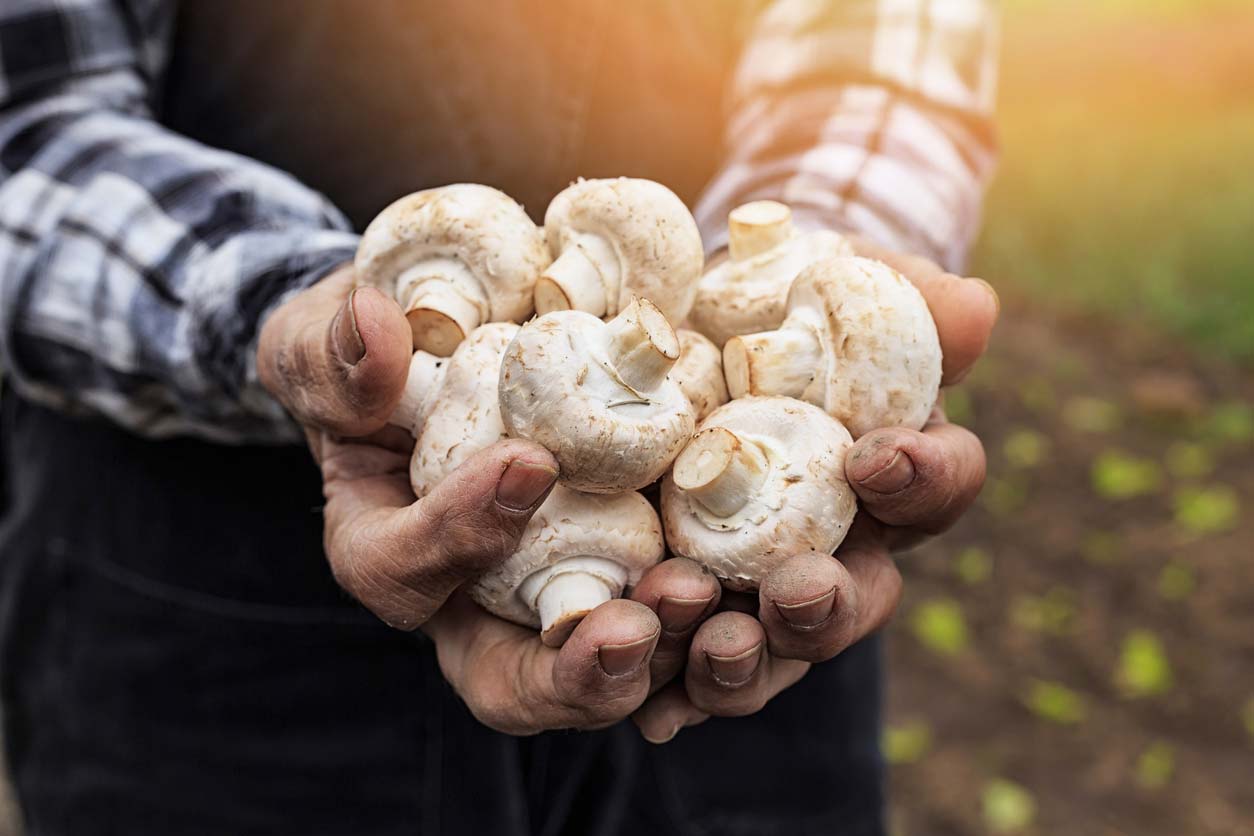
Mushrooms are impressive organisms. They’re biological powerhouses, offering tons of health benefits for us and for the environment. Their versatility makes them an excellent choice with immense culinary versatility. They’re highly nutritious. And as long as you cook them and get them from a trusted source, you shouldn’t have any adverse effects from eating edible mushrooms.

